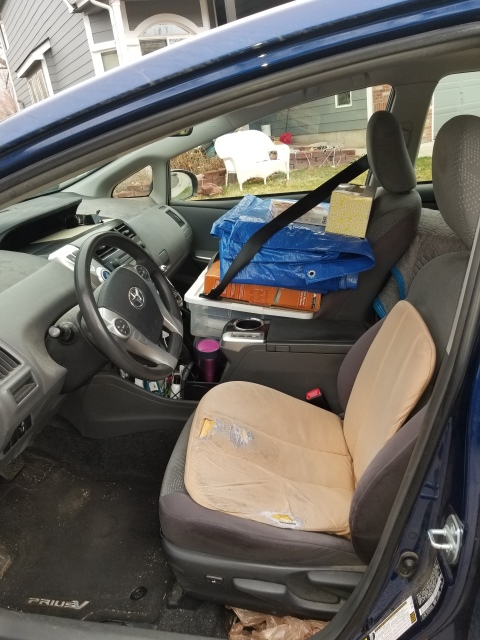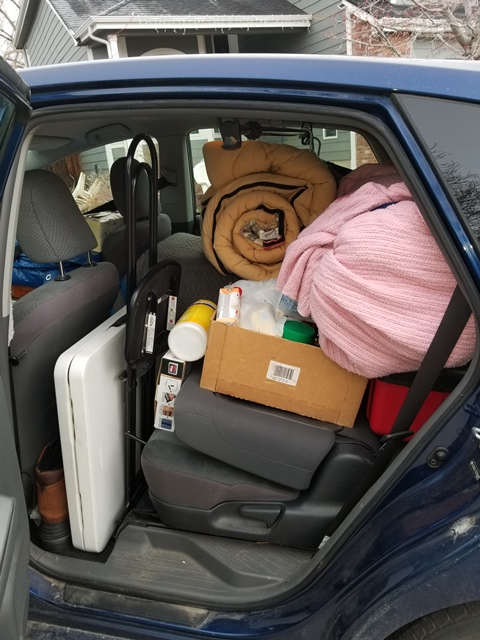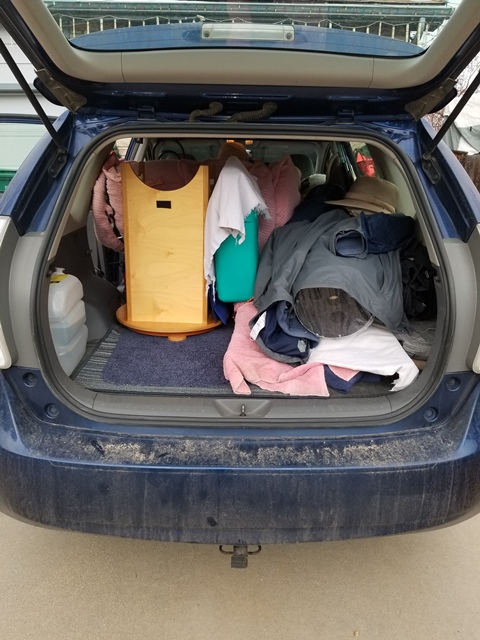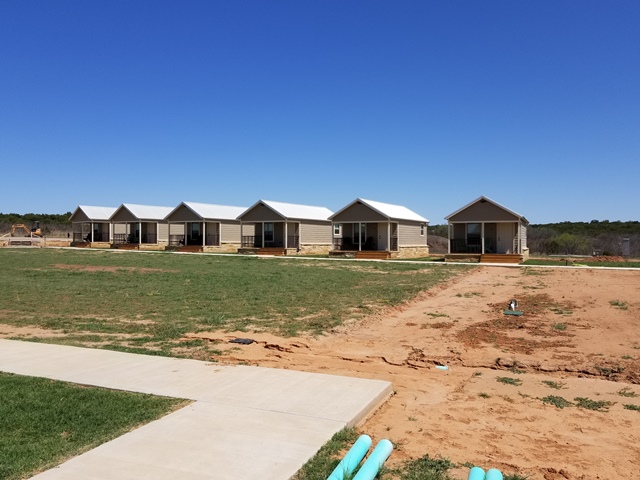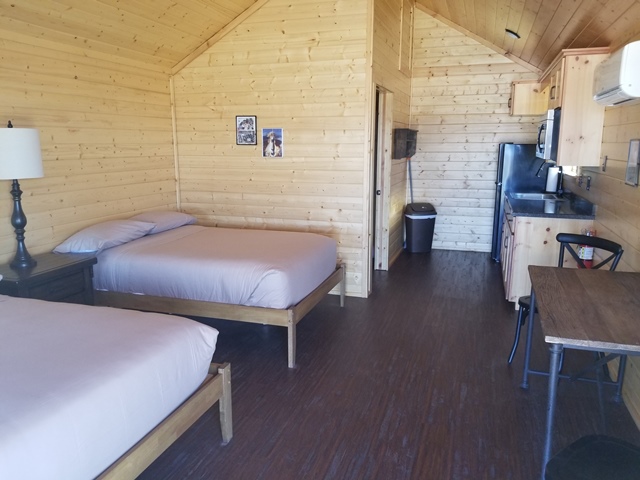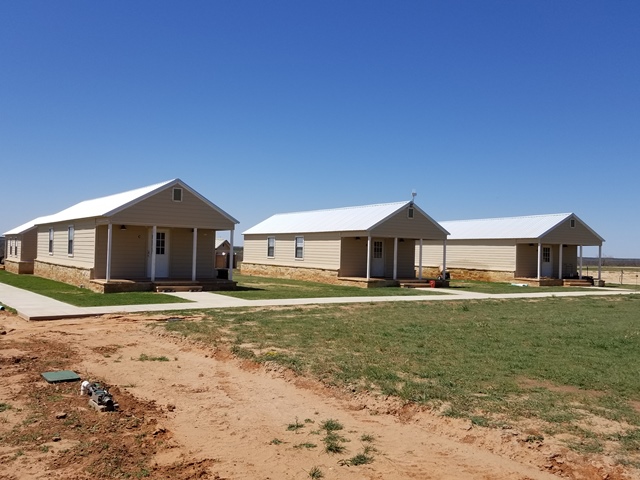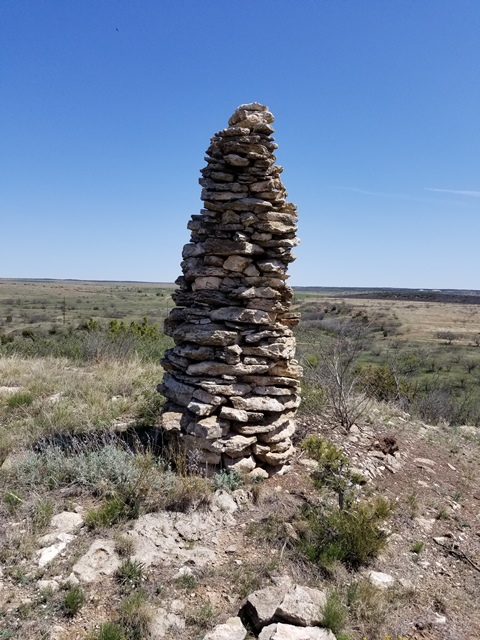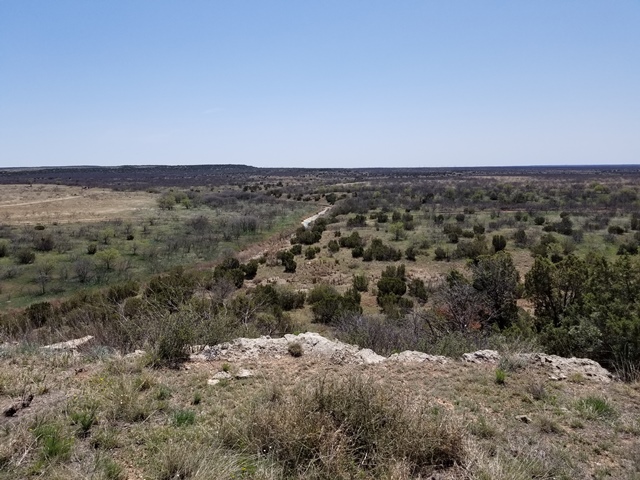Wednesday March 7, 2021 I had the car all loaded and was heading to work for a half a day. My work location is on the way to the Comanche Springs Astronomy Campus, sponsored by the Three Rivers Foundation (3RF).
This time of year, you can still get cooler weather in Texas. I took my cold weather observing gear so I could be comfortable if it was needed. There was enough wind to make it feel colder every night and I was thankful that I had these items with me.
So I packed items on the front passenger seat
and more in the back seat
and even more in the back of car. I took my 8" scope to use and I also planned on observing constellations from the past. In the late 19th century, the current 88 constellations were identified and those are the ones that are used today. But all cultures in the past had their own constellations and I wanted to observe many of those.
For the past 3 years, there has been quite a lot of construction happening at 3RF. And I was treated to quite a change from the last time I saw the place.
One change are these individual cottages you can rent.
Gary Carter, a good friend I once worked with and observed with when I lived in the Dallas area, stayed in the third cottage from the left. When he first walked up to me, I recognized his face, but his hair was longer than I had ever seen it when we were together years before. I was having trouble putting his name with his face until he said "I'm Gary." It was good to see him again.
This is the inside view of a cottage. There is an indoor bathroom with a shower in the back left room. A refridgerator, microwave and two comfortable beds.
These are the bunkhouses that can sleep about 12 people. There is a new one added to the original two that I remember being here before. But I think the location of those two are now more south than they used to be.
Another view looking east. You can see the cottages, the backside of thebunkhouses and two more cottages for the 3RF senior staff that stay in. This weekend Richard Brown was in the left cottage.
Friday night was very strong winds so we all gathered in front of this cottage to observe with binoculars and I did more ancient constellation sketching.
Saturday morning, we had a video call with Jeff Barton who was still in Dallas. It was good to see him and talk with him.
A panaroma of the Campus. Click the smaller image to see a larger one. Then zoom into the larger one.
You will see the cottages to the left (east). The bunkhouses are next to the right of the cottages. The original bathrooms and shower facilities are in the next building to the right. Way in the back (south) is a building with a roll-off roof that houses a 30" telescope. To the left of that building is a new, smaller telescope repair building. And the dome connected to the building to the far right (west) are the original classroom and the dome houses the 15" showpiece telescope, seen below.
We used the courtyard in front of the cottages to setup our equipment and observe. I was all setup to observe and sketch ancient constellations on Thursday night. One advantage of observing from 3RF is the dark skies and available electricity for us to power our equipment and laptops.
Mike Roos's 16" telescope that we shared views on to the left and my 8" telescope on the right.
I'm pretty excited to be back at 3RF observing. I used the piece of cardboard with the trianble cut out of it to try to see a difficult star called Sirius B. It is often hidden in the glare of the much brighter Sirius star. I didn't see Sirius B with my mask on the front of my 8" but we did see it in Mikr Roos's 16" telescope. I think the trick was to use about 300 power to magnify Sirius to see it's "pup', as it is called, which is what we used on Mike's scope.
After it got dark, we noticed a line of light coming out of the northwest sky. When it got closer, it was a string of about 40 satellites heading to the south. They were very close together and as they passed overhead, some dimmed as other brightened. This was a set of Starlink satellites that were launched the day before and were heading to their final operating orbits. This was the first time I had observed this deployment event. It was very cool and I watched it across the sky until they disappeared.
There is a 2.5 mile hike along the south edge of the property that takes you to this stack of rocks the locals called the water marker.
It sits on top of a mesa that can be seen from miles around. The view below is a river that winds off to the east. Many of the rivers in the area had water in them due to recent heavy rains they had in the area.
